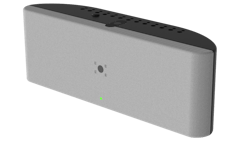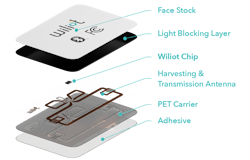This video is part of the TechXchange: The Internet of Things.
Batteries are the bane of IoT sensors, but they're typically a requirement as conventional energy-harvesting solutions like solar panels are often impractical. One solution is to provide power wirelessly. A power transmitter can typically energize multiple devices within its range. Though the amount of power tends to be small, it's usually sufficient for the sensors to operate as well as drive limited wireless communication to deliver information from the sensor.
Energous' PowerBridge is designed to send RF energy over the air and to devices with matching chips from the company that can store the energy for use by the device. Kero Basilios, Energous' Director of Application Engineering and Customer Support, shows the system in action (watch the video above). You can also watch Leveraging Wireless Power, which looks at InnoTractor's use of Energous' power technology to support an asset-tracking system that doesn't use batteries for its mobile IoT devices.
Energous sells the chips and devices to handle the wireless power exchange. The PowerBridge series is a packaged example of the transmit side (Fig. 1). It can send power to dozens of devices. And it doesn't just broadcast power like a conventional radio, but rather targets the individual devices for more efficient power transmission.
The transmitter needs to be paired with one or more devices like Wiliot's Pixel (Fig. 2). The Pixel is essentially an RF identification tag that's powered by Energous' wireless power transmission scheme. This provides more power and more range than a conventional RFID tag, and it enables the device to power more sensor support.
Wireless power is coming of age. It will never supply an unlimited amount of power, but it will deliver more than enough to address a wide range of applications, primarily IoT-based sensors and displays. It could be paired with lower-power application displays such as those used in eBook readers.
See more videos and read more articles in the TechXchange: The Internet of Things.


